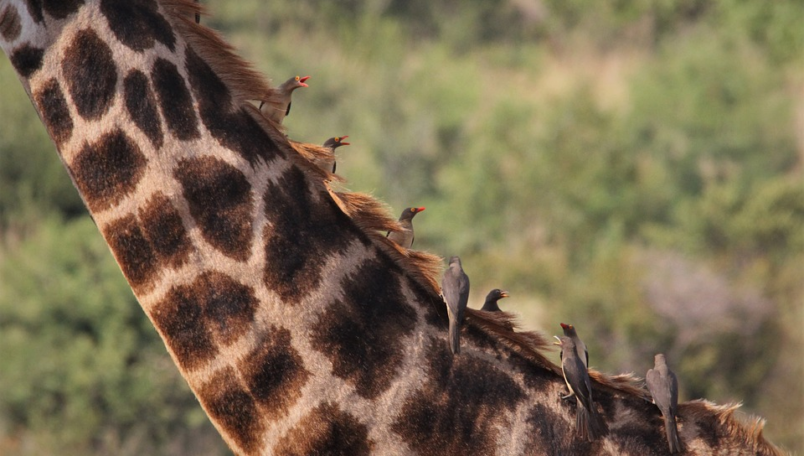Number (patterns): Oxpecker and Giraffe
Challenge level ⭐⭐
(designed for children with prior knowledge of the Year 3 and Year 4 programme of study)
Learning Objective
We are learning how to solve a natural world problem by using and applying our skills and knowledge of number and identifying patterns.
Useful prior knowledge:
- To recall multiplication and division facts for multiplication tables up to 12 × 12

Clip Description
The natural world is full of fascinating partnerships, whereby two very different species depend on each other for their survival.
In this fascinating clip, red-billed oxpeckers can be seen clinging to the body of a giraffe with their sharp claws. These small birds spend most of their life on the world’s tallest mammal. This is because a giraffe’s body provides an oxpecker tasty morsels of food in the form of ticks. The giraffe benefits from this relationship because ticks are blood-sucking parasites that carry diseases, so it is important to have them removed. Why might an oxpecker pluck hair from a giraffe’s mane? Watch the clip to find out.
Quick Whiteboard Challenge
One morning, an oxpecker ate some ticks that were hidden within the coat of a giraffe:
- The number was greater than 10 but less than 30.
- If you divide the number by 5, there is a remainder of 4.
- If you divide the number by 4, there is a remainder of 1.
How many ticks did the oxpecker eat?

 Sign in
Sign in